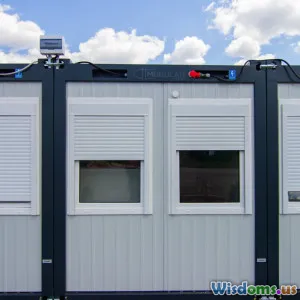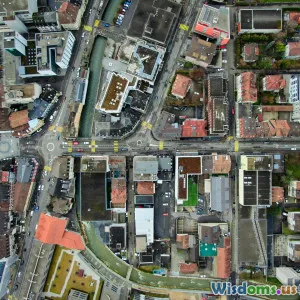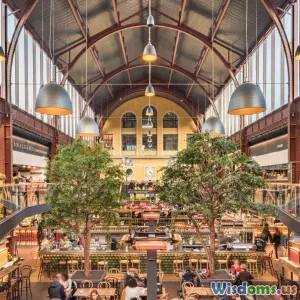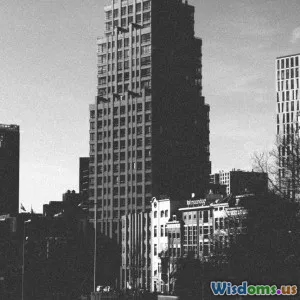
Enhancing Urban Life through Design
6 min read Explore how thoughtful architecture and urban design can transform city living, fostering community, sustainability, and well-being. (0 Reviews)
Enhancing Urban Life through Design
Urban life is a complex tapestry woven together by people, nature, and the built environment. As cities around the world continue to grow, the role of architecture and urban design becomes increasingly pivotal in enhancing the quality of life for their inhabitants. This article delves into how thoughtful design can transform urban spaces, promoting community, sustainability, and overall well-being.
The Role of Architecture in Urban Environments
Architecture is not just about creating aesthetically pleasing buildings; it’s about creating spaces that resonate with the community. Well-designed architecture can:
-
Foster Community Interaction: Buildings that encourage social gatherings—like community centers, plazas, and open markets—can help strengthen community bonds. For example, the High Line in New York City not only serves as a beautiful park but also as a community hub, bringing together residents and tourists alike.
-
Promote Health and Well-being: Urban design that incorporates natural elements can significantly impact mental and physical health. Green roofs, for instance, not only provide insulation and reduce energy costs but also offer residents a place to relax and enjoy nature. Research from the University of Illinois indicates that exposure to green spaces can reduce stress and improve overall mood.
Urban Design Strategies for Enhancing Life
1. Integrating Nature into Urban Landscapes
Nature plays a crucial role in enhancing urban life. Integrating parks, gardens, and green corridors into city planning can:
- Improve Air Quality: Vegetation helps filter pollutants, providing cleaner air for city dwellers. Cities like Singapore have set an example with their extensive network of parks and vertical gardens, which contribute to better air quality and biodiversity.
- Encourage Active Lifestyles: Urban designs that promote walking and cycling can lead to healthier populations. Cities that prioritize pedestrian pathways and cycling lanes, like Copenhagen, see higher rates of physical activity among residents.
2. Creating Multifunctional Public Spaces
Public spaces should serve multiple functions to cater to diverse community needs. Designing adaptable spaces that can host various events—such as farmers' markets, concerts, and festivals—can:
- Enhance Social Cohesion: Spaces that accommodate different activities encourage a sense of ownership and pride among residents. The Piazza del Campo in Siena, Italy, is a prime example where the square transforms into a vibrant marketplace, event venue, and social gathering spot.
- Promote Inclusivity: Designing spaces that are accessible to everyone, regardless of age or ability, fosters community engagement. Cities can benefit from implementing universal design principles to ensure all residents feel welcome in public areas.
3. Smart Urban Design and Technology
The advent of technology has revolutionized urban design. Smart cities utilize data and technology to enhance the urban experience. Key aspects include:
- Efficient Resource Management: Smart technologies can optimize energy usage, waste management, and transportation systems, leading to more sustainable urban environments. For instance, Barcelona uses smart sensors to monitor street lighting and traffic patterns, significantly reducing energy consumption.
- Enhanced Connectivity: Digital platforms can improve communication between city officials and residents, allowing for more responsive governance. Apps that inform citizens about local events, transportation options, and community services can enhance civic engagement.
Conclusion
Enhancing urban life through design is a multifaceted approach that requires collaboration among architects, urban planners, local governments, and communities. By prioritizing inclusive, sustainable, and multifunctional spaces, cities can foster a sense of belonging and improve the quality of life for all residents. As we continue to navigate the challenges of urbanization, it is imperative that we harness the power of thoughtful design to create vibrant, resilient, and livable urban environments for future generations.
As cities evolve, so too should our understanding of how to make them better places to live. Through innovative architecture and smart urban design, we can enhance urban life and cultivate thriving communities.
Rate the Post
User Reviews
Popular Posts


















